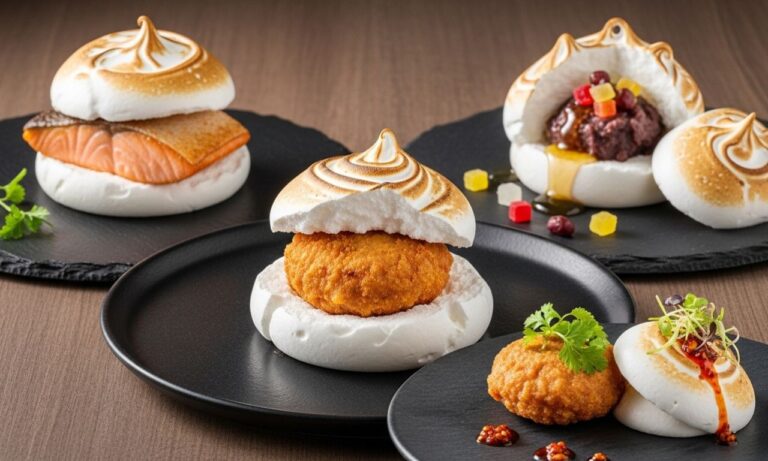When it comes to comforting, delicious food, few dishes can rival the humble yet versatile Xuebaotou. These Chinese steamed buns are not just a staple in many households; they represent a delightful blend of tradition and creativity. Soft, fluffy, and filled with a variety of ingredients, Xuebaotou can satisfy both sweet cravings and savory desires. This beloved dish has transcended borders and inspired countless variations that showcase regional flavors and personal twists.
Curious about what makes these buns so special? Join us as we explore the traditional recipe, take a look at mouthwatering adaptations, and uncover why every bite is an adventure worth savoring. Whether you’re new to the world of Xuebaotou or looking to expand your culinary repertoire, there’s something here for everyone!
Traditional Xuebaotou recipe
The traditional Xuebaotou recipe is a delightful journey into the heart of Chinese cuisine. These fluffy steamed buns are characterized by their soft, pillowy texture and often filled with a savory mixture.
To start, prepare your dough using all-purpose flour, yeast, sugar, and warm water. The key is to knead it until smooth and elastic. Let the dough rise for about an hour in a warm place until it doubles in size.
For the filling, ground pork mixed with garlic, ginger, soy sauce, and scallions creates a classic flavor profile that’s hard to resist. Once everything is ready, roll out small pieces of dough into circles. Place a spoonful of filling in the center before pinching them closed.
Steam these beauties for around 15 minutes. The result? Soft buns bursting with flavor that will make any meal special!
Unique variations and twists on the classic recipe
Xuebaotou offers a canvas for culinary creativity. Chefs and home cooks alike have embraced this classic dish, infusing it with unexpected flavors.
Consider adding spices like five-spice powder or Szechuan peppercorns to the dough. This twist brings warmth and depth, elevating each bite.
For a fusion approach, try incorporating ingredients such as kimchi or curry into the filling. These bold options create an exciting contrast against the fluffy bun exterior.
Vegetable lovers can explore fillings made from roasted mushrooms or seasonal greens mixed with tofu. The umami flavor complements the soft texture perfectly.
And let’s not forget about dessert! Sweet Xuebaotou filled with red bean paste or chocolate ganache makes for a delightful treat that surprises and delights those who enjoy traditional steamed buns in new ways.
Sweet vs savory Xuebaotou options
Xuebaotou offers a delightful playground for both sweet and savory lovers. Each variant brings something unique to the table, catering to diverse palates.
Savory Xuebaotou often features fillings like minced pork, mushrooms, or spicy vegetables. The umami flavors meld beautifully with the fluffy bun, creating a satisfying bite that warms the soul.
On the sweeter side, red bean paste and sesame filling are popular choices. These options introduce a gentle sweetness that perfectly balances the soft texture of the steamed dough.
Innovative variations have emerged too. Think matcha-infused buns filled with cream cheese or custard-filled creations drizzled with chocolate sauce.
Whether you prefer hearty meals or indulgent treats, there’s a type of Xuebaotou waiting for you to explore and enjoy!
Regional differences in Xuebaotou
Xuebaotou isn’t just a beloved dish; it’s a canvas for regional creativity across China. Each area puts its unique stamp on this classic steamed bun.
In northern regions, like Beijing, you’ll find Xuebaotou stuffed with hearty fillings such as minced pork and vegetables. The flavors are robust and often seasoned with soy sauce or five-spice powder.
Travel south to Guangdong, where the buns take on a sweeter twist. Here, they’re filled with sweet red bean paste or lotus seed paste, offering a delightful contrast to their savory counterparts.
Moving westward into Sichuan province introduces another layer of complexity. These variations might include spicy ingredients like chili oil or pickled mustard greens for an extra kick that ignites your taste buds.
Even within cities, families have their own cherished recipes handed down through generations. This makes every bite of Xuebaotou not only delicious but also rich in cultural stories waiting to be shared.
Tips for making the perfect Xuebaotou at home
To make the perfect Xuebaotou at home, start with high-quality ingredients. Fresh flour and yeast are essential for that soft, fluffy texture.
Kneading is crucial. Work the dough until it becomes smooth and elastic. This step develops gluten, giving your buns their signature chewiness.
Don’t rush the rising process. Allow your dough to proof in a warm area until it doubles in size. Patience here pays off with better results.
When shaping your buns, ensure an even thickness to achieve uniform cooking. A rolling pin can help create consistent sizes.
Steaming time matters too; avoid overcooking or undercooking by testing one bun first before removing them all from the steamer basket.
Feel free to experiment with fillings! Whether savory or sweet, adjust seasoning according to your taste preferences for a personal touch every time you make them.
Conclusion: Why Xuebaotou is a must-try dish with endless possibilities
Xuebaotou is more than just a dish; it’s an experience. These fluffy, steamed buns can be filled with anything your heart desires—whether savory or sweet. Their versatility makes them perfect for any meal or occasion.
From classic pork fillings to innovative vegetarian options, the variations are endless. Regional twists add even more excitement, showcasing local flavors and traditions. This allows everyone to find their own favorite version of Xuebaotou.
Making these buns at home opens up a world of creativity in the kitchen. With some practice and a few tips under your belt, you’ll be whipping up delicious batches that impress family and friends alike.
Don’t miss out on trying Xuebaotou; this humble yet delightful dish invites you to explore new tastes and textures while celebrating culinary tradition!


